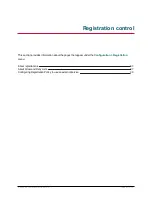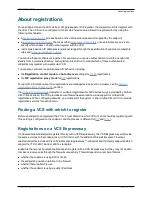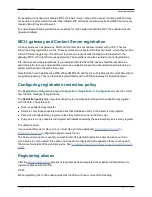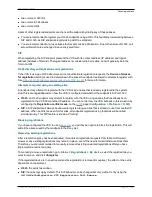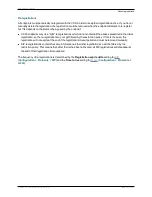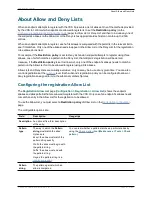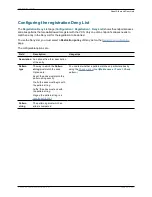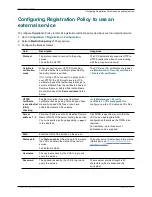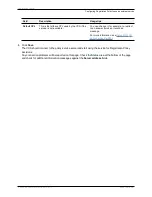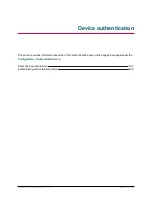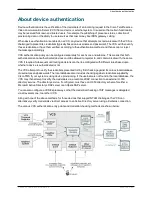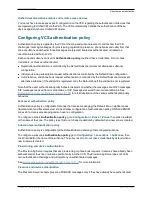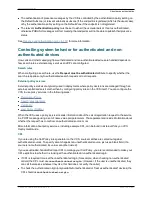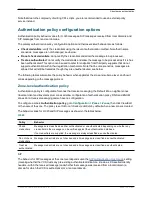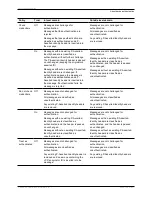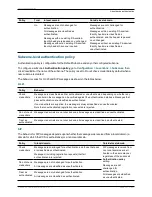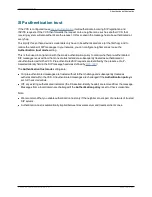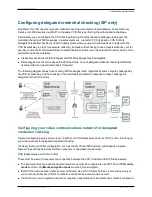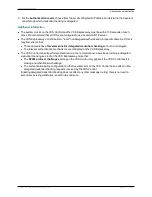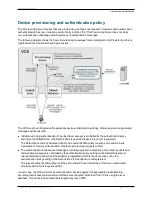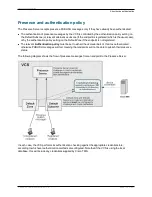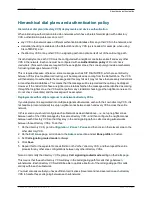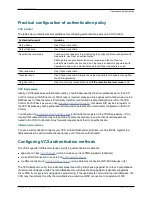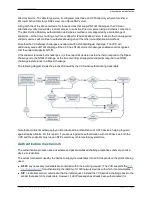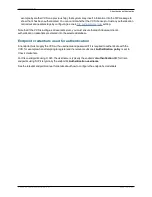
Unified Communications mobile and remote access devices
You do not have to make any explicit configuration on the VCS regarding the authentication of devices that
are registering to Unified CM via the VCS. The VCS automatically handles the authentication of these
devices against its home Unified CM cluster.
Configuring VCS authentication policy
Authentication policy is applied by the VCS at the zone and subzone levels. It controls how the VCS
challenges incoming messages (for provisioning, registration, presence, phone books and calls) from that
zone or subzone and whether those messages are rejected, treated as authenticated, or treated as
unauthenticated within the VCS.
Each zone and subzone can set its
Authentication policy
to either
Check credentials
,
Do not check
credentials
, or
Treat as authenticated
.
n
Registration authentication is controlled by the Default Subzone (or relevant alternative subzone)
configuration.
n
Initial provisioning subscription request authentication is controlled by the Default Zone configuration.
n
Call, presence, and phone book request authentication is controlled by the Default Subzone (or relevant
alternative subzone) if the endpoint is registered, or by the Default Zone if the endpoint is not registered.
Note that the exact authentication policy behavior depends on whether the messages are H.323 messages,
SIP messages received from local domains, or SIP messages received from non-local domains. See
Authentication policy configuration options [p.105]
for a full description of the various authentication policy
behaviors.
Zone-level authentication policy
Authentication policy is configurable for zones that receive messaging; the Default Zone, neighbor zones,
traversal client and traversal server zones all allow configuration of authentication policy; DNS and ENUM
zones do not receive messaging and so have no configuration.
To configure a zone's
Authentication policy
, go to
Configuration > Zones > Zones
, then click View/Edit
or the name of the zone. The policy is set to
Do not check credentials
by default when a new zone is created.
Subzone-level authentication policy
Authentication policy is configurable for the Default Subzone and any other configured subzone.
To configure a subzone's
Authentication policy
, go to
Configuration > Local Zone > Subzones
, then
click View/Edit or the name of the subzone. The policy is set to
Do not check credentials
by default when a
new subzone is created.
Provisioning and device authentication
The Provisioning Server requires that any provisioning or phone book requests it receives have already been
authenticated at the zone or subzone point of entry into the VCS. The Provisioning Server does not do its
own authentication challenge and will reject any unauthenticated messages.
See
Device provisioning and authentication policy [p.112]
for more information.
Presence and device authentication
The Presence Server accepts presence PUBLISH messages only if they have already been authenticated:
Cisco VCS Administrator Guide (X8.1.1)
Page 103 of 507
Device authentication
About device authentication




